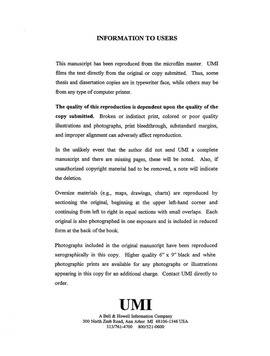| dc.contributor.advisor | Carr, Frederick H., | en_US |
| dc.contributor.author | Zhang, Jian. | en_US |
| dc.date.accessioned | 2013-08-16T12:30:31Z | |
| dc.date.available | 2013-08-16T12:30:31Z | |
| dc.date.issued | 1999 | en_US |
| dc.identifier.uri | https://hdl.handle.net/11244/5806 | |
| dc.description.abstract | The "spinup" problem is one of the most serious problems for short-range precipitation forecasting. It is known to be related to the deficiencies in the initial moisture, latent heating and divergent circulations. The motivation for this research is to mitigate the spinup problem by providing better initial conditions using radar and satellite data. | en_US |
| dc.description.abstract | Most of previous real-data diabatic initialization studies have used 2D precipitation data to derive and adjust the initial latent heating and moisture fields in order to alleviate the spinup problem. The deployment of high resolution meteorological radar and satellite observation systems has provided new resources for diabatic initialization. A cloud analysis system was developed to synthesize these data sources and to construct 3D cloud and precipitation fields. The system is based on the LAPS cloud analysis, with several modifications. Based on the three- dimensional cloud and precipitation analyses, a moisture and diabatic initialization scheme was developed. In the initialization scheme, the initial thermal field is adjusted to account for the latent heating due to cloud condensation. Relative humidity field in the analyzed cloudy regions is adjusted to alleviate the deficiencies in the conventional moisture observations. The initialization scheme was tested using both simulated storms and real data cases. | en_US |
| dc.description.abstract | The results show that the present moisture and diabatic initialization can provide significant improvement in convective-scale precipitation forecasts with the aid of radar and satellite observations over a conventional data initialization. The thermal adjustment is important in data sparse regions for improving the initial thermal field as well as the initial moisture field. Without the thermal adjustment, the moisture adjustment can be insufficient in the data sparse regions. The results show that inserting cloud or rainwater field at the initial time can help produce cold outflows at the surface and generate new storms. However, if the initial water load is not balanced by consistent updrafts, it could be detrimental to the development of the existing storms at the initial time. It is also found that an accurate initial wind field in the rain region has a significant positive impact on reducing the phase errors in precipitation simulations. | en_US |
| dc.format.extent | xiv, 194 leaves : | en_US |
| dc.subject | Moisture. | en_US |
| dc.subject | Physics, Atmospheric Science. | en_US |
| dc.subject | Precipitation forecasting. | en_US |
| dc.subject | Hydrology. | en_US |
| dc.subject | Atmosphere, Upper Radiosonde observations. | en_US |
| dc.subject | Geophysics. | en_US |
| dc.title | Moisture and diabatic initialization based on radar and satellite observations. | en_US |
| dc.type | Thesis | en_US |
| dc.thesis.degree | Ph.D. | en_US |
| dc.thesis.degreeDiscipline | School of Meteorology | en_US |
| dc.note | Adviser: Frederick H. Carr. | en_US |
| dc.note | Source: Dissertation Abstracts International, Volume: 60-05, Section: B, page: 2042. | en_US |
| ou.identifier | (UMI)AAI9929559 | en_US |
| ou.group | College of Atmospheric & Geographic Sciences::School of Meteorology | |
